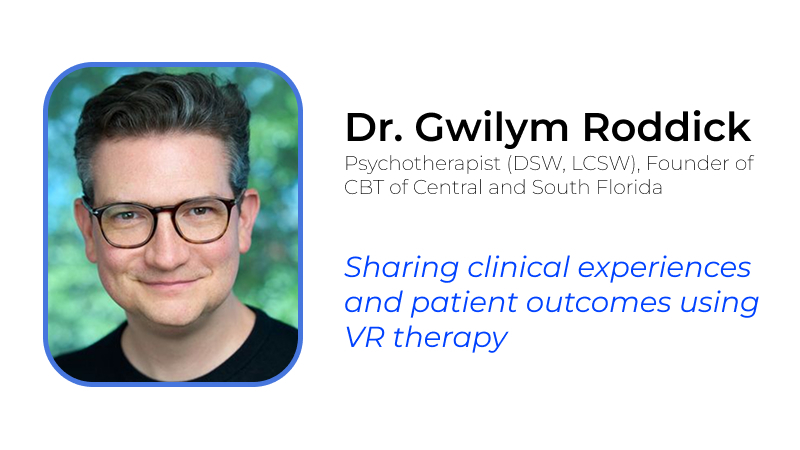Revolutionizing Mental Health with VR Therapy

Understanding the Role of Virtual Reality in Mental Health
What is Virtual Reality in Mental Health?
The technology itself uses head-mounted displays in order to isolate users from their physical surroundings on the visual spectrum, replacing the visual input of the real world with environments that are rendered digitally. More advanced systems can also incorporate spatial audio, haptic feedback (via controllers), as well as scent delivery mechanisms for improved immersion.
Therapeutic VR is actually different from entertainment VR, with the biggest difference being its deliberate design around psychological principles. Each environment that is created to be used for therapeutic purposes is made not to impress or entertain, but to elicit specific cognitive, emotional, or behavioral responses which are relevant to the overarching goals of a treatment.
How is Virtual Reality Applied as a Clinical Tool?
Embodiment experiences are another substantial contributor to mental health practices in VR, making it possible for patients to inhabit different perspectives or virtual bodies. This way, body image disturbances can be explored, along with perspective-taking difficulties. Virtual environments have a reputation for being great at skills training, and mental health skills can be practiced similarly – with real-world interactions, but without the risks of real-world consequences.

2. Gradual exposure and skill-building sessions under the guidance of a therapist.
3. The integration of skills and insights from virtual reality into real-world settings.
Benefits of VR for Mental Health Research and Practice
For clinicians, VR becomes a symbol of standardization and personalization at the same time, providing standardized treatment protocols that are easy to reuse while having plenty of parameters to adjust in order to tailor each experience to individual needs.
The engagement factor also reaches previously unimaginable heights with the introduction of VR, especially for individuals who are resistant to traditional treatment methods. The inherently immersive and interactive nature of virtual reality invites participation and can even transform dreaded therapy exercises into delightful experiences that are highly anticipated.
Virtual Reality Therapy: How It Helps in Mental Health Treatment
Dr. Gwilym Roddick - the Founder and Director of Cognitive Behavioral Therapy of Central & South Florida, PLLC and Advisory Board member of PsyTechVR - joined host Jessica Reyes with the Mental Health TV Network to discuss the potential of virtual reality therapy.
Dr. Roddick explained how this cutting-edge approach works by helping you overcome your fears, build resilience, and change the patterns of avoidance.
Therapeutic Applications of VR for Mental Disorders
Through and unlikely marriage of social work and cutting edge VR technology, the USC Institute for Creative Technologies and the USC School of Social Work are revolutionizing the training methods for a new generation of mental health professionals, shifting the way clinicians learn to interact with their patients.
The Effectiveness of Immersive VR Therapy
Neurocognitive rehabilitation following stroke, neurodegenerative diseases, or traumatic brain injury has also been encountering an increase in VR-related treatments, leveraging the ability to create engaging training tasks within fa unctionally relevant environment. Patients who practice everyday activities such as kitchen navigation or grocery shopping in virtual settings can train their attention, spatial navigation, executive function development, and memory enhancement capabilities at the same time.
Disorders that are related to substance abuse are another important frontier in VR therapy. They use cue exposure techniques in order to reduce craving responses while introducing patients to virtual environments that help them train coping skills under therapeutic guidance. Repeated exposure to high-risk scenarios without substance availability has the potential to reduce the possible risk of a relapse when similar scenarios are encountered in real-life.
The Role of VR in Assessing Mental Health Conditions
How is Virtual Reality Used for Mental Health Assessment?
In anxiety disorders, assessment environments can simulate progressively challenging situations while measuring physiological responses, subjective distress levels, and the degree of avoidance behavior. Such a graduated approach can reveal functional thresholds and specific triggers with a high degree of precision, making it a lot more effective than conventional methods.
Cognitive assessment is also transformed via complex virtual scenarios that evaluate memory, spatial navigation, attention, and executive functions in simulated daily activities. A virtual apartment of sorts can be used for this, with patients performing sequential tasks such as meal preparation or medication management. This way, the abundance of data on cognitive functioning is generated in contextualized and relevant situations, with the ability to detect subtle impairments that abstract neuropsychological tests might have missed.
Advantages of VR in Psychological and Behavioral Assessments

Data collection automation is another notable advantage to VR-oriented approaches, with many parameters being captured continuously throughout the assessment – be it physiological responses, movement patterns, decision timings, or even eye tracking. Such an abundance of information is also gathered without any noticeable measurement activity, eliminating the risk of disrupting natural behavior and only introducing a minimal observer effect.
VR assessments are also great in revealing the functional capacity of a patient – verifying how individuals actually perform in real-life simulations. It is not that uncommon for traditional assessment tools to inadequately predict real-world functioning. However, VR can bridge this kind of ecological validity gap due to its ability to measure various performance metrics during scenarios that closely resemble challenges in daily lives of patients, be it social functioning, vocational capacities, independent living skills, or emotional regulation.
Challenges and Limitations in VR-based Assessment Tools
At the same time, it is possible for simulation sickness or individual differences in technology familiarity to influence the results of an assessment. Heightened anxiety from the VR equipment itself is somewhat common for older adults and technology-averse patients, and there are also many potential users that have some degree of simulation sickness that must be addressed in protocol design beforehand in order to not interfere with the validity of the assessment.
Ethical Considerations for Integrating VR in Mental Health Treatment
Data privacy concerns also take on a new level of complexity with VR assessments that can capture an extraordinary number of different details, including movement signatures, physiological responses, gaze patterns, and many others. Rich datasets like these can contain information that might be considered potentially sensitive since they go beyond traditional assessments in scrutiny, necessitating improved security measures and better transparency in data retention and data analysis policies.
Another topic that should be mentioned here is about therapeutic boundaries, considering the fact that the line between assessment and intervention in VR is extremely blurred. Assessment scenarios can even act as exposure therapy or skills training without the intent for them to be this way, which is why formal informed consent for intervention should be obtained beforehand. It is a very nuanced ethical territory that requires clear communication along with the flexibility of clinical judgments.

Emerging Innovations in Virtual Reality for Mental Health Treatment
Integration of Standalone/Wireless Technology with VR for Mental Health

Home-based continuation of therapy is now a lot more accessible thanks to the existence of mobile lightweight headsets that can utilize smartphones as display and processing units at once. There is also a lot of development that goes into augmented reality capabilities, blending virtual elements and real environments into one – a hybrid approach that works great for graded reintegration into complex real-world situations.
Recent VR Developments from Leading Institutions
The Virtual Reality Medical Center pioneered multisensory anxiety treatment platforms that use vibrotactile feedback and olfactory stimuli alongside traditional visual and auditory components.
Stanford’s Virtual Human Interaction Lab advanced embodiment research in a significant manner through various protocols where patients can experience fundamentally different perspectives from their own. Perspective-shifting processes like this have shown promise in conditions that involve empathy deficits or stereotyped thinking, with many subjects experiencing lasting attitudinal changes after brief virtual embodiment processes.
The recent work of Oxford University has been focused on being able to manipulate virtual social environments as a means of addressing persecutory delusions or paranoia. Protocols that have been developed this way can adjust a variety of factors like eye contact duration, interpersonal distance, or facial expressions of virtual characters in order to test threat perception against controlled social feedback.
VR and Ketamine Therapy in Mental Health Treatment
Even the earliest clinical trials suggest that a combined approach like this can significantly increase treatment response, allowing for deeper engagement with therapeutic VR content when under effects of ketamine (which causes heightened suggestibility and reduced cognitive defense mechanisms). Another aspect of this development is the ability to direct the neuroplastic effect toward a specific therapeutic target instead of performing random neural reorganization.
It is a good example of a broader trend toward multimodal treatment packages being more effective than each measure performed separately. Instead of positioning VR as a standalone solution, a lot of experts in the field increasingly view it as a strong catalyst capable of enhancing other known approaches – physiological, psychological, or pharmacological.
Exploring Future Innovations in Virtual Reality Environments
Haptic feedback is another interesting area of development focused on creating tactile sensations corresponding to virtual interactions, ranging from gentle pressure feedback to graded touch sensations for desensitization protocols. Haptic feedback promises transformative changes for treating conditions with strong bodily components – sensory processing disorders, tactile hallucinations, etc.
Benefits of Virtual Reality in Mental Health Assessment

- improved ecological validity of assessments
- increased degree of personalization
- extensive data capture capabilities that are performed automatically.
However, there is one aspect that we have yet to cover, and that is patient engagement.
Increasing Patient Engagement with VR-based Interventions
VR assessment has the potential to mask the clinical evaluation to a certain degree using immersive experiences to reduce the self-consciousness that comes from being observed (and knowing that). The sense of presence in virtual environments tends to lead toward more spontaneous responses than carefully considered answers in questionnaires or deliberate behaviors during in-person observations.
The immediate visualization and feedback of VR environments enhances patient understanding of what assessment could find. Instead of discussing test scores in an abstract manner, clinicians now can review recorded sessions with patients and pause them at key moments in order to highlight alternative responses, behavioral patterns, and so on.
The Role of Virtual Reality in CBT
Overview of PsyTechVR's Contributions to Mental Health
PsyTechVR’s ecosystem approach addresses one of the persistent challenges of therapeutic VR – tool fragmentation across technical requirements and different platforms. The creation of integrated suites of assessment and intervention modules operating within a consistent technical framework helps PsyTechVR create VR programming experiences that are easy to implement and configure in any clinical environment.

How PsyTechVR's Platforms Facilitate Mental Health Therapy
Real-time adjustment capabilities of virtual environments during therapy sessions can be made through a tablet-based control panel, modifying challenge levels, stimuli, or environmental parameters based on observed patient responses. A dynamic control like this can maintain the therapeutic relationship at the center of treatments while enhancing the precision of therapeutic intervention.
Beyond clinical applications, PsyTechVR has also developed specialized research platforms enabling investigation of previously difficult research questions. The advanced data collection capabilities allow for pinpoint precision behavioral tracking synchronized with physiological monitoring and environmental events. An integrated data capture like this has particular value for studies of attentional processes, implicit behavioral tendencies, and so on.

FAQ
Can virtual reality truly reshape the future of mental health care?
What makes virtual reality more effective than traditional mental health therapies?
How does VR therapy create a safe space for people to confront mental health challenges?
What role does immersive technology play in rewiring the brain for emotional healing?
How does virtual reality balance the line between enhancing mental health and ethical concerns?


VR Bundle
- Latest Meta Quest 3s (128GB) VR Headset with the installed VR app
- 12-Month Access to PsyTechVR Platforms
- Generative-AI to create exposure scenarios
- Dedicated Support Manager
- Comprehensive 4-Hour Training & Certificate
- Exclusive Marketing Materials for your website and social media
*VR headset will belong to you with full access to the VR app store
PsyTechVR: made by professionals,
for professionals
- Dr. Albert "Skip" Rizzo
Leading expert in VR Therapy with 30+ years' experience.
VR scientist (ResearchGate)
Clinical psychologist. With 30+ years in VR research, Dr. Rizzo has developed groundbreaking VR tools for treating PTSD, TBI, autism - Dr. Udi OrenClinical psychologist and senior medical psychologist, PhDPast President at EMDR-EUROPE, Chief instructor of the EMDR method in Israel (Senior Trainer), President of Israel EMDR Association
- Dr. Gwilym RoddickPsychotherapist (DSW, LCSW), Founder of CBT of Central and South FloridaCBT/ERP/ACT expert, OCD Central and South Florida Board Member, ABCT committee member, Florida and New York based
- Dr. Lynn PanattoniClinical psychologist specializing in integrative and functional medicine, PhDLicensed clinical psychologist specializing in trauma, anxiety, and integrative mental health. Expert in CBT, mindfulness & lifestyle medicine
- Dr. Elizabeth McMahon
Clinical Psychologist since 1980, author of Virtual Reality Therapy for Anxiety" book
In memory of Dr. Elizabeth McMahon (1950-2024), whose vision and contributions continue to guide our mission - Dr. Gianni SerraClinical Psychologist and Psychotherapist, Certified Neuroscience specialistEvangelist of VR exposure therapy in Italy and member of the Italian Society of Cognitive Behavioral Psychotherapy
- Dr. Richard LambProfessor of Educational Psychology, Neurocognition Science Lab, University of GeorgiaPhD in science education and educational measurement. Dr. Lamb leverages neuroscience and VR to enhance STEM education
by professionals,
for professionals
Dr. Roddick earned his Master's degree in Columbia University and his Doctorate – in Rutgers University. His clinical training includes significant roles within Montefiore Hospital’s health system and a four-year tenure at The Ross Center's New York office, a highly respected evidence-based mental health practice.
Dr. Roddick has been a strong advocate for mental health standards, training, and practice from the beginning of his career. He is an active member of the Association for Behavioral and Cognitive Therapies, the New York City Cognitive Behavioral Therapy Association, and the International OCD Foundation. He has served on the Public Education and Media Dissemination Committee for several years within ABCT. He also holds a position on the Board of Directors of OCD Central and South Florida, along with the position in the Advisory Board of PsyTechVR.
Dr. Roddick has also maintained a decade-long practice in New York City in addition to his practice in Florida. He has been a therapist in a non-profit Headstrong Project for the past seven years, offering individual and group psychotherapy to Post-9/11 veterans.
Dr. Roddick specializes in treating anxiety disorders, obsessive-compulsive disorder (OCD), and substance use disorders. He employs evidence-based psychotherapies, including CBT, Acceptance and Commitment Therapy (ACT), and Exposure and Response Prevention (ERP), to help individuals overcome their challenges. His approach is straightforward and compassionate, focusing on carefully listening to clients and offering support tailored to their needs.
As an advisor for CBT development of PsyTechVR, Dr. Roddick provides ideational and methodological guidance to enhance the integration of CBT into virtual reality (VR) applications. His contributions aim to advance the effectiveness of VR-based therapeutic interventions, particularly in the context of exposure therapy, CBT and related therapies.

Read more about PsyTech VR
| | Get in touch We're ready to lead you into the future of mental health Sending this information you agree to share your personal information according and limited by our confidentiality statement. |

We're excited to offer you the chance to experience the power of PsyTech VR with a FREE Trial!




 PsyTechVR
PsyTechVR






